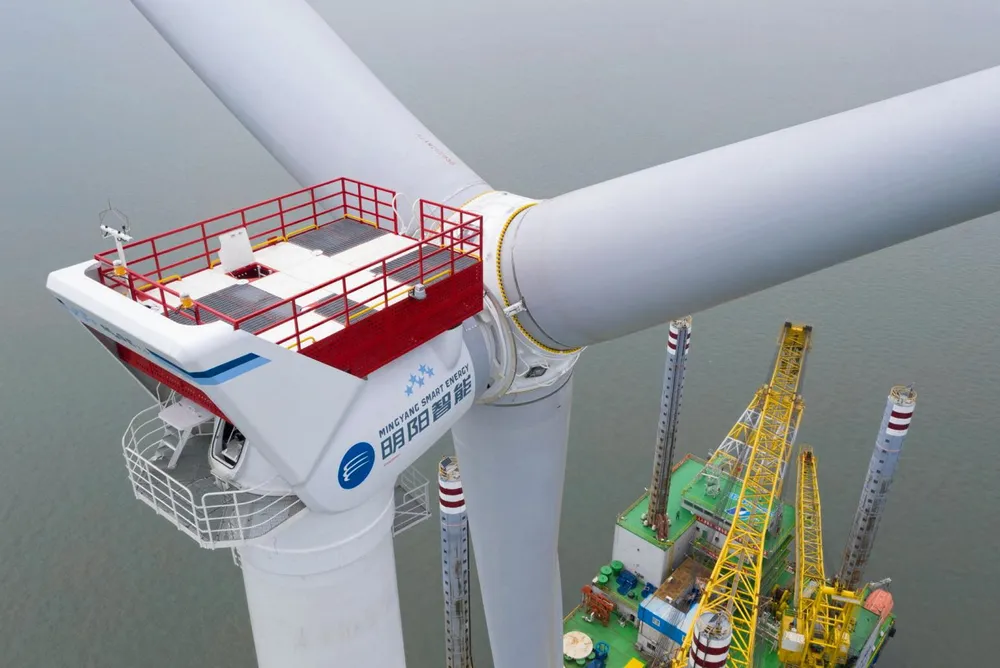Banks are shifting from 'no' to 'maybe' when it comes to Chinese turbines
OPINION | Technical and commercial advances have brought Chinese turbine makers closer to surmounting the bankability barrier, writes Green Giraffe managing director Clément Weber

Every week brings new evidence of a push by Chinese turbine makers into the European offshore wind market, from plans of new factories to preferred supply agreements.
While Chinese dominance in solar and batteries is a widely accepted reality, European offshore wind has remained a Westerner’s game.
Each news item suggesting a change in this status quo triggers a heated debates about fair competition, protectionism and how to achieve an uneasy balancing act between industrial development, electricity prices and the fight against climate change.
The question is not a new one and has remained an ever present topic for discussion at Green Giraffe since we came into being 15 years ago.
For years, we remained convinced that the reticence of the banks toward Chinese turbines would keep European markets tantalisingly out of reach of their suppliers. The continued dominance of the Western suppliers, Siemens Gamesa, Vestas and, to a lesser extent, GE,has proved us right.
But there are several reasons why it is time to reappraise that assessment.
- Price: a spike in capex costs since 2022 means that the price of turbines has become more decisive than ever. Economic viability is no longer a matter of balancing cost of supply and lease payments but goes to the heart of whether a project will be built at all.
- Availability: the supply chain is so constrained that turbines from the big three need to be reserved years in advance, with heavy down-payments. This is good news for suppliers emerging from a long period of unsustainably low profits, but it also creates room for newcomers able to offer additional capacities with shorter timing.
- Floating wind: More than 100 floating technologies in the marketplace mean Western turbine suppliers need to choose where to invest their engineering time, leaving Chinese suppliers as the only option in some instances.
For these reasons, and more, we expect Chinese turbines to be installed in European waters before the end of the decade and that leads to the key question we have to ask as financial advisor — are Chinese turbines bankable?
Here's why they are looking more so now than ever before:
- Track-record: China is the single largest offshore wind market and only uses Chinese suppliers. Bankability concerns still exist, but a lack of experience from Chinese turbine suppliers should not be on the list.
- Quality: the banks will rely on their technical advisors to assess the quality of the turbines. At this stage, we have not heard anything that makes us believe that the quality issues that have cropped up in China are any worse than the recent serial defects seen on Siemens or GE turbines.
- Transparency: this crucial bankability test may be the biggest challenge of all, but progress is being made. Chinese suppliers are increasingly recognising that they will not succeed without sharing more information on their products, fabrication and performance. The road to achieving an acceptable level of openness may be a long one, but a path now exists.
- Contractual terms: another barrier to entry was a knowledge gap in terms of what it takes to offer a bankable package. In today’s market, the Western suppliers have more bargaining power, and they push terms to the limit of what the banks can be comfortable with. But Chinese suppliers have been learning about bankability requirements and are increasingly willing to offer stronger commercial terms. Adjustments are still needed to match bankability standards, but the terms offered by Chinese suppliers are starting to overtake incumbent suppliers in the bankability assessment.
At first sight, our bottom-up risk analysis of the Chinese suppliers doesn’t present an obvious red flag but still faces a chicken-egg dilemma. Chinese turbines will continue to be excluded if the banks stick to the position that they simply don’t want to finance projects using Chinese turbines.
From our sounding out of the most active lenders in the sector, we found that half of them continue to consider it as a no-go area, while the other half is more open.
The latter group has the option of engaging in a process with reinforced due diligence on all related points of concern and with adjusted lending terms, meaning that part of the money saved on the turbine price will be used to pay higher margins to bankers.
The openness of the latter group falls short of outright enthusiasm, as even the most bullish remain cautious, but the position has shifted from a blunt “no” to a “maybe under certain conditions”.
We still don’t believe that Chinese turbines will flood the European offshore wind market anytime soon but, for the very first time, we can say that they are likely to be deployed on some projects in the medium term.
This will divide the lending community, but we believe that well-structured projects with strong contractual terms validated by serious due diligence from the best advisors will be able to raise non-recourse finance for projects using Chinese turbines.